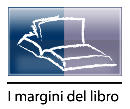 |
8, 2014 | |||
| Abstracts | versione italiana | |
| Saggio |
Vincenzo Vitale
L'epistola dedicatoria della summontina come finale dell''Arcadia' di Sannazaro
Starting from the assumption that there is a tight intertextual relationship with the introductory letter to the Raccolta aragonese, this essay attempts to demonstrate the hypothesis that Jacopo Sannazaro is himself the author of the dedicatory letter of Arcadia (officially signed by Pietro Summonte). A crucial point of the analysis is the identification of the reason for which Sannazaro decided to validate a version of the Arcadia published by Summonte without his own authorization: he wanted to establish a parallel between the editorial history of his own work and the circumstances of the publication of the Aeneid. The literary and intertextual nature of the incongruities in the dedication of Arcadia raise the question of the authentic nature of the text: is it a "text" or a "paratext"? The study leads to the conclusion that the dedication of Arcadia is indeed a "text", because it ultimately contributes to define the plot of the work.
| versione italiana |
| Saggio |
Marco Paoli
L'incisione al servizio della dedica. Gli apparati decorativi nelle dediche dal Cinquecento al Settecento
The study aims to analyze the decorative elements which accompagny the dedications in the printed editions of the Old Regime. The enraved ornamentation of dedicatory epistle, and the coats of arms or portraits incorporated into the antiporta or the frontispiece are taken into account. The most articulate expression of this aspect of book illustration occurs in Italy since the sixteenth century. This is due to the importance that the mecenatic dedication assumes in the Peninsula, because of the subordination of the authors to the patronage system, and of the fragmentation of this system into great and small patrons, spread in numerous provinces of the country. The Italian example will be followed in France, but with greater ornamental sobriety, evn in presence of illustrated editions. However, the situation changes when he influence of Italian culture is strong, as with Maria de' Medici or with Mazzarino. Then, the adoption of decorative patterns, which enhance both the figure and the contribution of the patron, appears with more decision and with high quality results.
| versione italiana |
